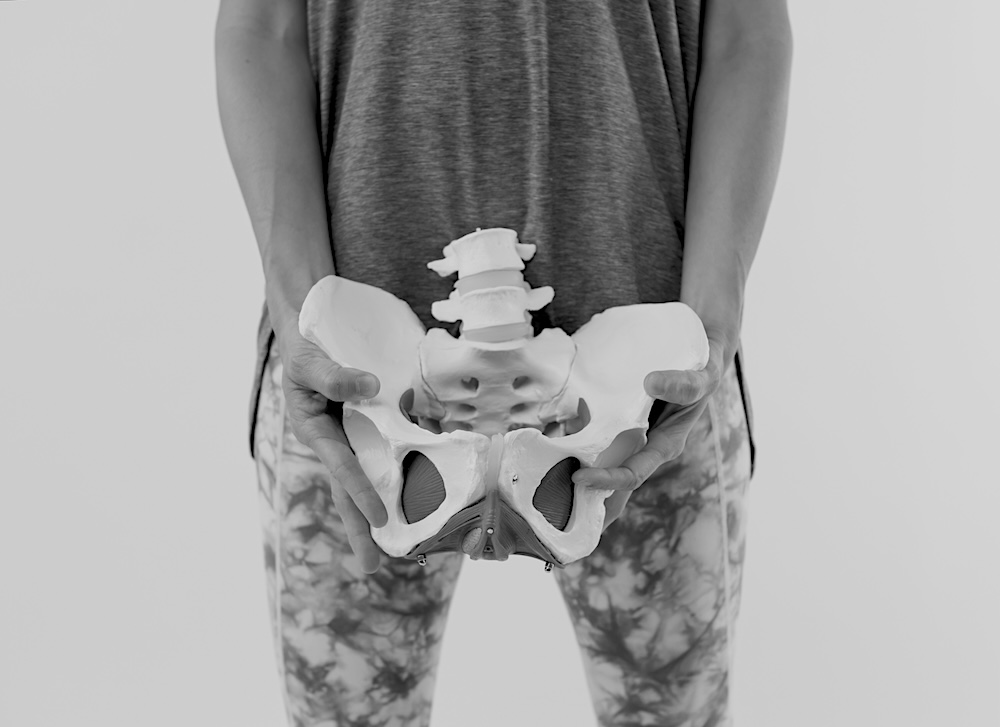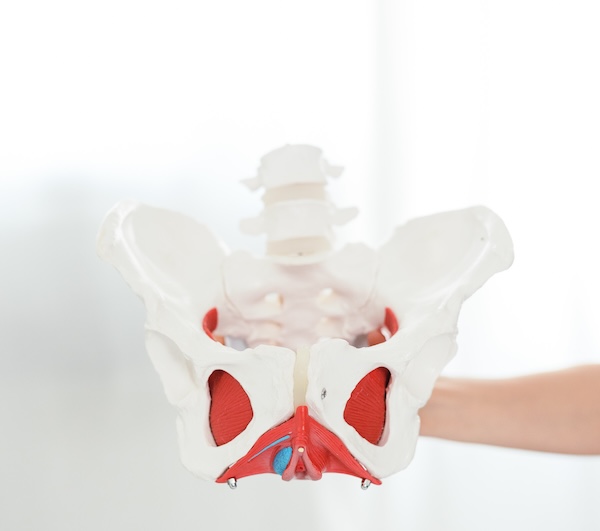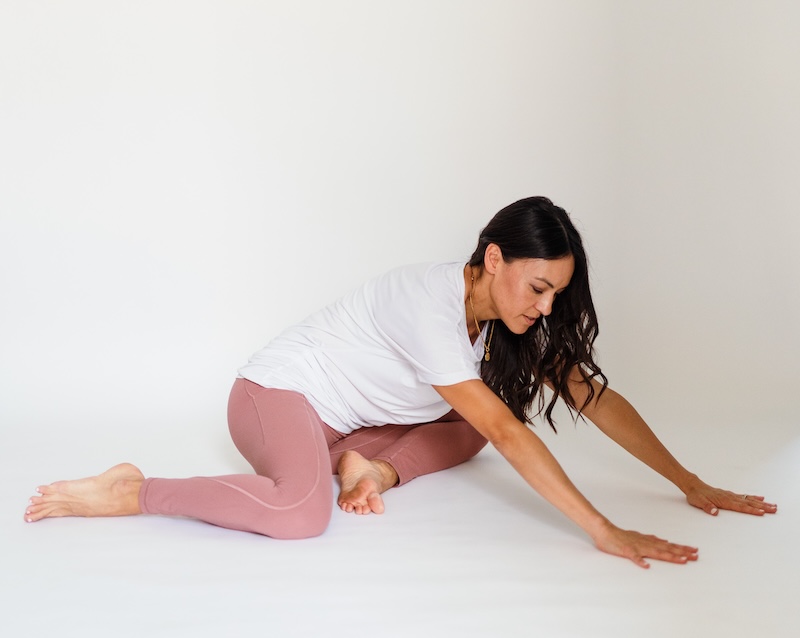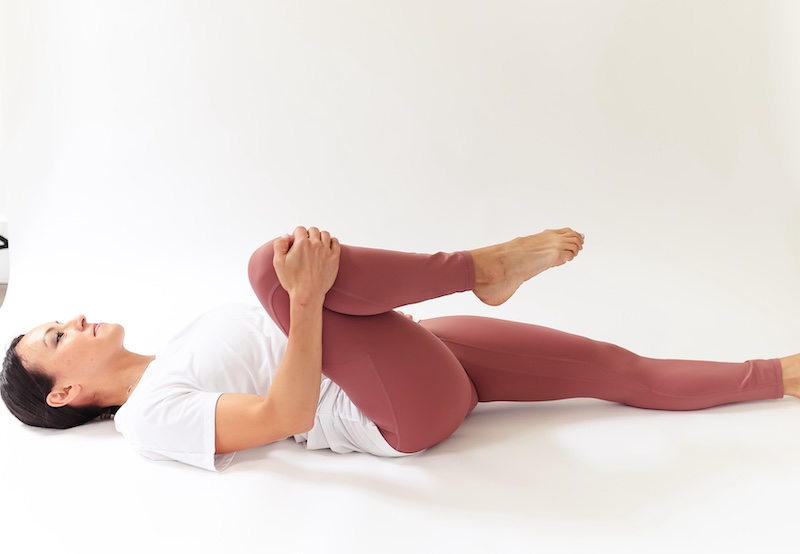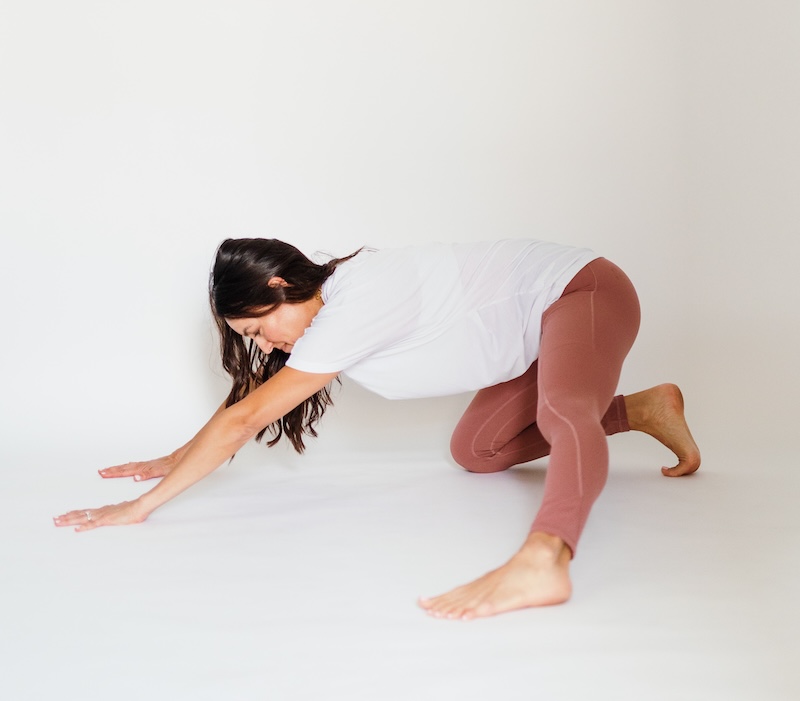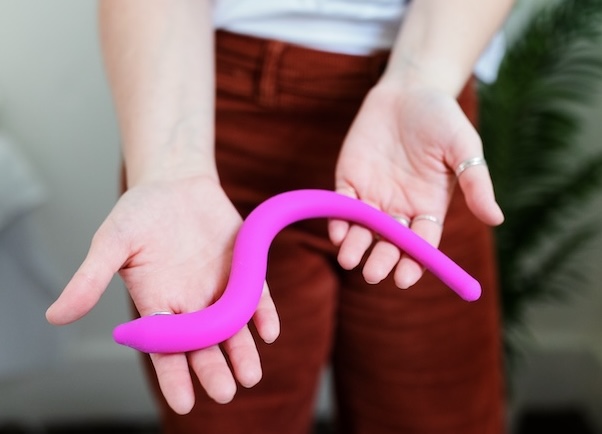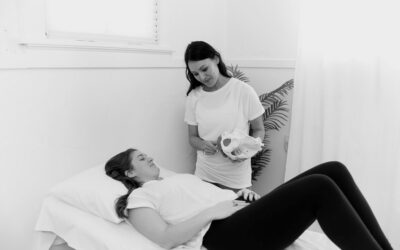Pudendal neuralgia is a chronic, nerve-related pelvic pain that affects the genital and rectal area. Like most pelvic floor dysfunction, physical therapy—including pudendal neuralgia exercises—can help!
What is Pudendal Neuralgia?
Here’s a quick anatomy lesson:
The pudendal nerve is actually a set of two nerves—one on each side of the body. This nerve bundle runs down the back of your pelvis in between your legs and has three primary branches:
- Inferior rectal nerve, which sends info to and controls the anus
- Perineal nerve, which sends info to the perineum and labia or scrotum and controls the pelvic floor muscles
- Dorsal serve, which sends sensory info to the vulva or penis
(Yes, I said penis! People of all genders can get pudendal neuralgia, though it’s much more common for folks with vaginas.)
The pudendal nerve controls movement and sensation in the pelvic area. It also helps the urethral and anal sphincters work properly. Which means if these nerves become compressed – also known as pudendal nerve entrapment–you get an intense list of symptoms. Exercises for pudendal neuralgia can bring relief!
Symptoms of Pudendal Neuralgia
Pudendal neuralgia pain often feels like a burning, tingling, aching, stabbing, pinching, or numbness in your genitals and anus. While the pain is generally located in your pelvis, it can also spread into the thighs and lower back.
In addition to chronic pelvic pain, pudendal neuralgia can affect your time in the bathroom and bedroom. Urinary or fecal frequency, urgency, and incontinence and painful sex are common symptoms.
Pudendal neuralgia symptoms can be here-and-there or constant, and they often get worse as the day progresses. Plenty of folks struggling with the condition have pain with sitting, particularly at the end of the day.
What Causes Pudendal Neuralgia?
Damage, injury, inflammation, or irritation of the pudendal nerve can all cause pudendal neuralgia. Birth injuries and pelvic surgeries are particularly common culprits, but any activity that causes compression or stretching of these nerve bundles can contribute to symptoms.
For example, folks who bicycle for long periods are much more likely to experience pudendal neuralgia because of the compression of these nerves during prolonged sitting. Chronic, intense constipation can also cause pudendal neuralgia, because of straining and pushing putting pressure on the pelvic floor.
Pudendal neuralgia can worsen over time because of repeated small injuries from daily activities.
Diagnosing Pudendal Neuralgia
Like plenty of other chronic pain conditions, pudendal neuralgia is underdiagnosed and inadequately treated.
A major problem? Irritated and inflamed doesn’t necessarily mean entrapped. In other words, you can have all the symptoms of an entrapped pudendal nerve without actually having a fully entrapped pudendal nerve. That means that the irritation causing your symptoms may not appear on MRI or CT scans.
Diagnosis is also tricky because general pelvic pain, particularly in women, has plenty of other potential diagnoses. Vulvodynia, endometriosis, and vaginismus are all commonly diagnosed before pudendal neuralgia.
A detailed history and thorough exam can help to mitigate these diagnostic issues, so you can get on the path to relief. (Don’t let anyone shrug their shoulders at you! You deserve thorough, compassionate care!)
Pelvic Floor Physical Therapy for Pudendal Neuralgia
Nerve pain-focused medications, such as pudendal nerve blocks, and surgical interventions are often prescribed for pudendal neuralgia. But emerging research shows that pelvic floor physical therapy, with a focus on pelvic floor relaxation, is an effective, non-invasive approach to treating the condition.
A pelvic floor physical therapist (PT) will start by taking your history, making sure they have a clear timeline and presentation of symptoms. Then, they’ll do a thorough physical exam to walk through nerve function around your genitals, perineum, and anus.
After a formal diagnosis of pudendal neuralgia, your pelvic floor PT will use a variety of interventions to address your symptoms. A PT evaluation will include an assessment to determine how movement patterns contribute to your symptoms and utilize manual therapy techniques to improve pelvic floor tightness and tension.
Pudendal Neuralgia Exercises
When you have pudendal neuralgia, it’s important to take a break from exercises that require sitting, squatting, bending, or lifting. All these movements put additional strain on your pudendal nerve and potentially increase pudendal nerve inflammation.
Doing stretches to to relax your pelvic floor, on the other hand, can do wonders for nerve pain. To decrease tension, irritation, and inflammation, try:
Shin Box Stretch
- Sit with one leg in front of you with your shin at a 90 degree angle, the other leg behind you also bent at 90 degrees.
- Lean over the front knee with your back straight to feel the stretch in your hip.
- Take 5 deep breaths and switch sides.
Knee to Chest Stretch
- Start lying on your back.
- With one leg straight on the ground, bring the opposite knee to your chest and hold.
- Take 5 deep breaths and switch sides.
Inner Thigh Stretch
- In tall kneeling, stretch one leg out directly to the side.
- Rock your bottom back onto your heels and feel a stretch on the inner thigh muscle on your outstretched leg.
- Hold for 5 deep breaths and repeat on the opposite side.
Using a Therawand for Pudendal Neuralgia
Many people with pudendal neuralgia find relief using techniques to massage and release internal muscle tension. For example, using a pelvic floor (or trigger point) wand to release muscle spasm and facial restrictions can decrease symptoms.
Trigger point wands are curved devices, typically no wider than the index finger, that help target a tight spot in the pelvic floor. The wand helps sustain gentle pressure on a tender spot in the pelvic floor, which promotes relaxation of that muscle. Wands can be used vaginally or anally, but once you pick a hole to use with the device, stick with that one! Putting something into your anus and then into your vagina can transfer bacteria.
Once inserted, press the tip of the wand toward your pelvic floor muscles, and search for a sensitive or tender spot. When you find one, hold the pressure as you breathe and the tenderness decreases. Typically a 5-10 minute session 2-3 times a week is plenty for trigger point release.
Relax with The V-Hive!
Easing pelvic floor tension is a necessary first step toward alleviating pudendal neuralgia. And the V-Hive Membership is here to help.
Check out The Pelvic Floor Relaxation Program, exclusive to V-Hive members. Here, you’ll get targeted stretches and exercises that can ease pudendal neuralgia pain and help you return to your favorite activities—pain-free and leak-proof.
Stop suffering and start living. Start your 7-day free trial today!

